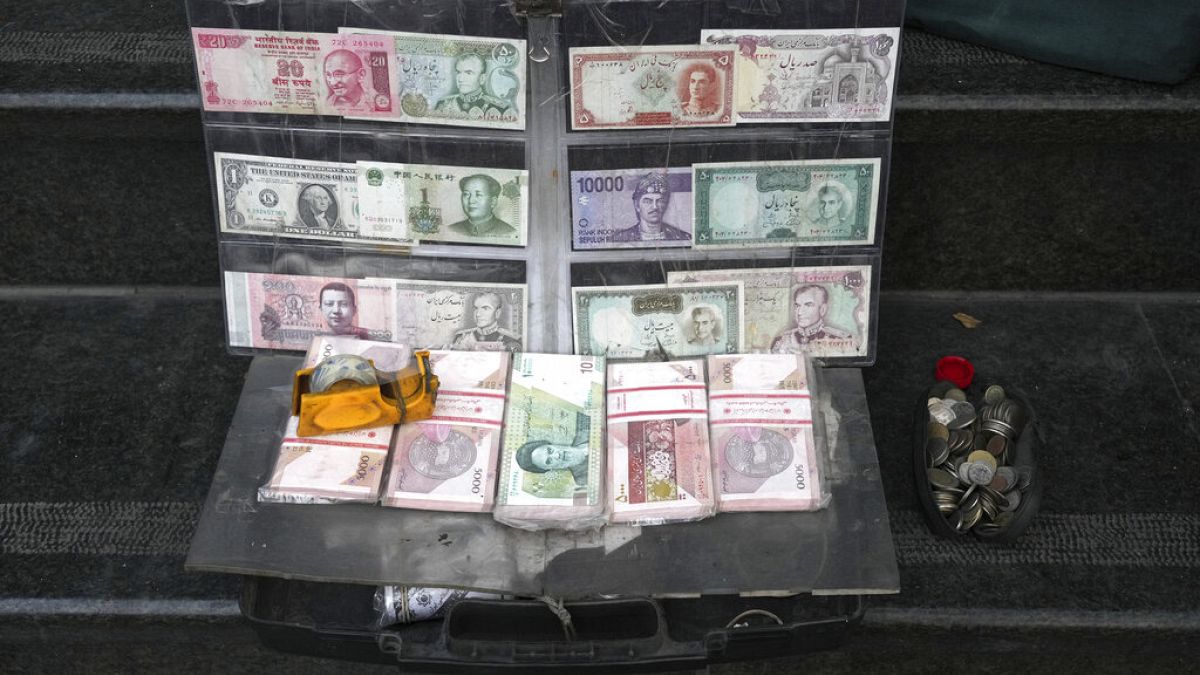The Iranian rial has plunged rapidly against the dollar ever since the Israel-Hamas war led to increased worries of a direct US-Iran confrontation.
Iran’s national currency has dropped about 13% since early January this year, having steadily declined ever since the start of the Israel-Hamas war. As of mid-February, one US dollar was worth about 570,000 rials (€12.51). Back on 29 January this year, the rial had hit an 11-month low, with one dollar being worth about 582,500 rials.
However, despite this sustained and very glaring devaluation, it looks like Iran may be more comfortable burying its head in the sand when it comes to global currency rates. The Minister of Economic Affairs and Finance, as reported by Iran International, recently said “we certainly do not recognize the free market exchange rate officially.”
Instead it only recognises the lower government rate set by the Iran Center for Exchange as the official rate. Since 6 October 2023, this figure increased about 4.1%, with one dollar being equivalent to about 429,210 rials by the end of January.
The government also insists that the strategies it has employed so far to keep the rial afloat in the international currency market are working, although evidence seems to be pointing otherwise.
Since foreign currency at the lower government rate is very scarcely available, most people have been forced to turn to the black market in order to stock up on US dollars. This comes with its own set of risks though, as the Iranian government has now cracked down on several transactions, labelling them as unauthorised. These include exchanges made virtually.
Exchange offices in Iran’s capital, Tehran, are also not allowed to share rates with the public, nor are they allowed to sell foreign currency to the public. Iranians also face some restrictions on the transfer of rials from domestic bank accounts.
Rising worries of US-Iran conflict could further deflate rial
Ever since the start of the Israel-Hamas conflict, Iran has faced more international criticism, due to the Iran-backed Yemeni Houthi rebel group attacking commercial ships in the Red Sea. Ships of several countries such as Saudi Arabia, Israel, UK, South Korea, US and more have been struck. The Houthis have revealed that this is in protest of Israel’s actions in Palestine.
This has led to prominent shipping companies such as Maersk, Mediterranean Shipping Company and Hapag Lloyd announcing that they would be temporarily pausing their journeys through the Red Sea and Suez Canal. In some cases, this has also involved going around the African continent.
There are also speculations of Iran supporting Hamas, as well as other Palestinian resistance groups such as Palestinian Islamic Jihad (PIJ).
However, following a Houthi attack on a US military base in Jordan on 28 January, speculations of a US-Iran direct conflict have been increasing. This has led to an atmosphere of considerable unrest and turmoil in Iran. If the tensions between these two countries escalate further, the rial may potentially deteriorate further.
However, Iranian government officials continue to maintain that the devaluation is mainly due to illegal currency brokers.
